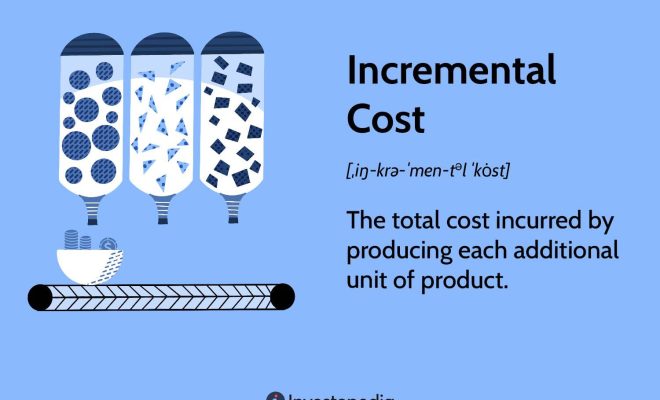How to calculate incremental cost

Introduction
In the world of business and finance, it is crucial to make well-informed decisions based on various calculations and financial metrics. One such important metric is the incremental cost – the difference in total costs between two alternatives. Incremental cost analysis helps to assess the potential benefits and disadvantages of different options, allowing management to make efficient and effective decisions. In this article, we will discuss the concept of incremental cost and provide a step-by-step guide on how to calculate it.
Understanding Incremental Cost
Incremental cost, also known as marginal cost or differential cost, refers to the additional cost incurred when producing an additional unit or making changes in production. It takes into account only the relevant costs and revenues directly associated with a specific decision, excluding any fixed costs that do not vary with volume or change.
Calculating incremental costs can benefit decision-makers in various scenarios, including:
1. Assessing the financial impact of expanding production
2. Analyzing the feasibility of introducing a new product line
3. Determining whether to accept a special sales order
4. Deciding whether to make or buy a product component
How to Calculate Incremental Cost
To calculate incremental cost, follow these steps:
Step 1: Identify the Relevant Costs and Revenues
Start by identifying all the relevant costs and revenues associated with each alternative option. Relevant costs are those that change as a direct result of implementing decisions or altering operations. These include variable costs such as materials, labor, and utilities directly associated with production.
Step 2: Calculate the Total Cost for Each Alternative
Add up all relevant costs for each alternative under consideration so that you can determine their respective total costs. Be sure not to include fixed costs that don’t change regardless of production level adjustments.
Step 3: Determine the Incremental Cost
Subtract the total cost of Alternative A from Alternative B to find the incremental cost.
Incremental Cost = Total Cost of Alternative B – Total Cost of Alternative A
A positive incremental cost indicates that Alternative B has a higher total cost than Alternative A, while a negative
incremental cost implies that Alternative A has a higher total cost.
Step 4: Analyze the Results
Assess the calculated incremental cost in the context of potential benefits and other factors such as revenue generation, risk, and strategic alignment. Management can use these insights to make informed decisions on which alternative to choose.
Example
Suppose a company is considering expanding its production capacity from 10,000 units to 15,000 units. The relevant costs for producing 10,000 units are $50,000, and for producing 15,000 units, the relevant costs are $70,000. To calculate the incremental cost:
Incremental Cost = $70,000 (Total Cost for 15,000 units) – $50,000 (Total Cost for 10,000 units)
Incremental Cost = $20,000
In this case, the incremental cost of expanding production to 15,000 units is $20,000. The company can now compare this additional cost with the expected benefits from the expansion to make an informed decision.
Conclusion
Calculating incremental costs is crucial for businesses making decisions about changes in production levels or product offerings. By understanding the relevant costs associated with different alternatives and how they differ from one another, management can use this information to optimize their decision-making process and achieve strategic goals. Remember that it’s essential to carefully consider all relevant factors when evaluating alternatives and making well-informed decisions.






